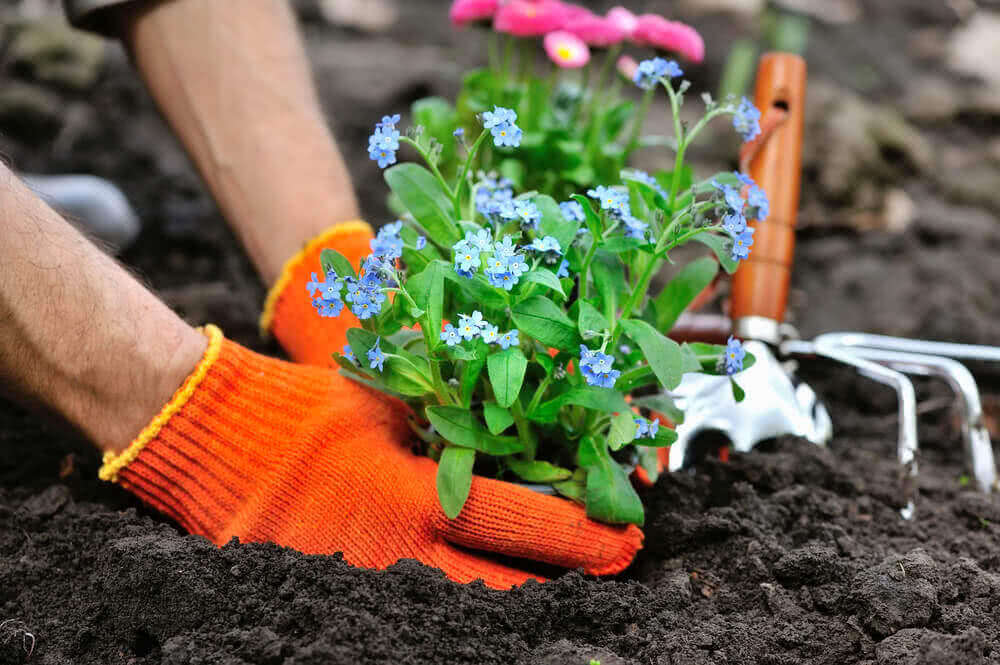Seasonal Gardening Tips: What to Plant and When for Ideal Outcomes
The Comprehensive Overview to Gardening: Discover the Advantages of Different Designs and Approaches
Gardening includes a varied selection of designs and techniques, each offering special benefits customized to private choices and ecological contexts. As we check out these various designs, it ends up being obvious that the options made can considerably influence both the yard's wellness and its contribution to the surrounding environment.
Recognizing Horticulture Fundamentals
Comprehending the basics of gardening is essential for cultivating a growing and sustainable yard. A successful horticulture endeavor starts with a strong foundation of expertise concerning dirt, plant selection, and climate considerations.
Choosing the right plants is just as important. Understanding their certain demands-- such as sunlight, water, and spacing-- ensures compatibility with the regional environment and dirt problems. This option process must additionally consider the development behaviors and lifecycle of plants, enabling a balanced and visually pleasing yard.
Moreover, effective watering techniques are important. Over-watering and under-watering can both lead to plant anxiety and illness. Applying a timetable based upon seasonal modifications and plant needs can boost water performance.
Popular Horticulture Styles
What defines the significance of prominent horticulture designs? These styles envelop varied aesthetic concepts, practical demands, and ecological factors to consider, eventually showing the gardener's individual vision. Amongst the most renowned designs is the home garden, characterized by its casual format and a vibrant array of blossoms and vegetables. This approach stresses a harmonious mix of shade and texture, developing a welcoming environment.
Alternatively, the official yard symbolizes symmetry and order, typically including geometric patterns and carefully cut bushes. This style interacts sophistication and sophistication, with carefully selected plants that enhance an organized aesthetic.
The Japanese yard provides a serene and introspective experience, using natural environments like water, rocks, and plants to develop a peaceful setting. It focuses on simplicity and equilibrium, motivating reflection.
Additionally, xeriscaping has actually gained popularity, specifically in dry areas (Gardening). It focuses on drought-resistant plants and effective water usage, advertising sustainability while improving landscape charm
Benefits of Container Horticulture
Container horticulture provides a plethora of advantages that make it an enticing option for both newbie and experienced gardeners alike. One of the key benefits is flexibility; containers can be placed in different areas, allowing garden enthusiasts to optimize sunshine direct exposure and produce visually enticing arrangements. This flexibility makes it possible to garden precede where typical in-ground gardening may not be viable, such as balconies, outdoor patios, or urban atmospheres.
Furthermore, container horticulture provides far better control over dirt conditions. Gardeners can customize the soil mix to match certain plants, ensuring optimal water drainage and nutrient accessibility. This is particularly valuable for individuals staying in areas with bad or infected soil.
One more significant advantage is the decreased threat of bugs and illness. Container plants can be kept track of extra quickly, and any problems can be attended to great site quickly. Furthermore, this technique can Full Report minimize the spread of invasive species.
Lasting Gardening Practices
Sustainable gardening practices are crucial for promoting environmental health and wellness and improving biodiversity in our environments. These practices prioritize ecological equilibrium, source preservation, and making use of natural methods to lessen negative environmental influences. By utilizing methods such as composting, gardeners can minimize waste while enhancing soil health, thus cultivating a thriving garden ecosystem.
Water conservation is one more vital element of sustainable horticulture. Techniques such as rainwater harvesting, drip watering, and the usage of drought-resistant plants can substantially lower water use while ensuring that plants obtain appropriate wetness. Incorporating native plant species right into yard designs sustains regional wildlife and reduces the demand for chemical fertilizers and chemicals, which can be hazardous to the environment.

Eventually, sustainable gardening techniques not only add to much healthier yards but additionally advertise a more resilient environment, using lasting benefits to both the gardener and the surrounding neighborhood.
Tips for Successful Horticulture
To grow a flourishing garden, gardeners need to focus on cautious preparation and thoughtful implementation of their horticulture techniques. Begin by evaluating the regional environment and soil conditions, as these variables considerably affect plant option and growth. Pick plants that are appropriate to your setting, taking into consideration indigenous types that will certainly thrive with marginal intervention.
Applying a well-structured design is vital (Gardening). Make use of friend growing strategies to advertise biodiversity and natural parasite control, while guaranteeing each plant has appropriate room for development. This not just enhances looks yet likewise enhances overall plant health
Routine upkeep is vital to an effective garden. Establish a regular routine for watering, weeding, and fertilizing. Mulching can help preserve dampness and suppress weeds, while likewise including natural matter to the soil.
Don't take too lightly the importance of monitoring. Consistently keeping an eye on plant health and wellness and development will certainly permit for timely interventions. Be open to learning and adapting; horticulture is a continuous process that benefits see here from experience and trial and error. By prioritizing mindful preparation, implementation, and ongoing maintenance, garden enthusiasts can attain a vibrant and efficient yard that prospers throughout the periods.
Final Thought


In recap, the exploration of varied gardening styles and techniques reveals their complex advantages, adding to both aesthetic allure and ecological health. Container gardening provides versatility and ease of access, while lasting practices boost environmental stewardship. By integrating different strategies and approaches, garden enthusiasts can maximize their initiatives, advertise biodiversity, and create practical exterior areas. Eventually, this thorough guide functions as a useful resource for growing successful horticulture experiences, cultivating a deeper link with nature and the bordering ecosystem.